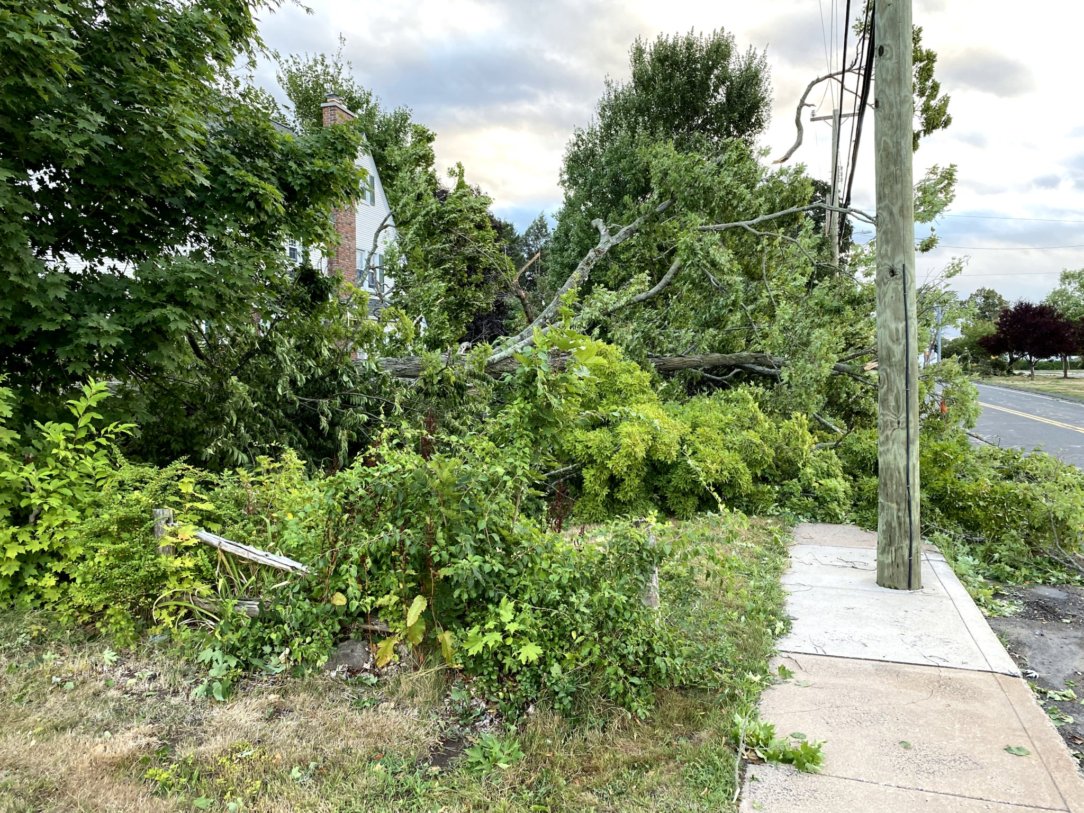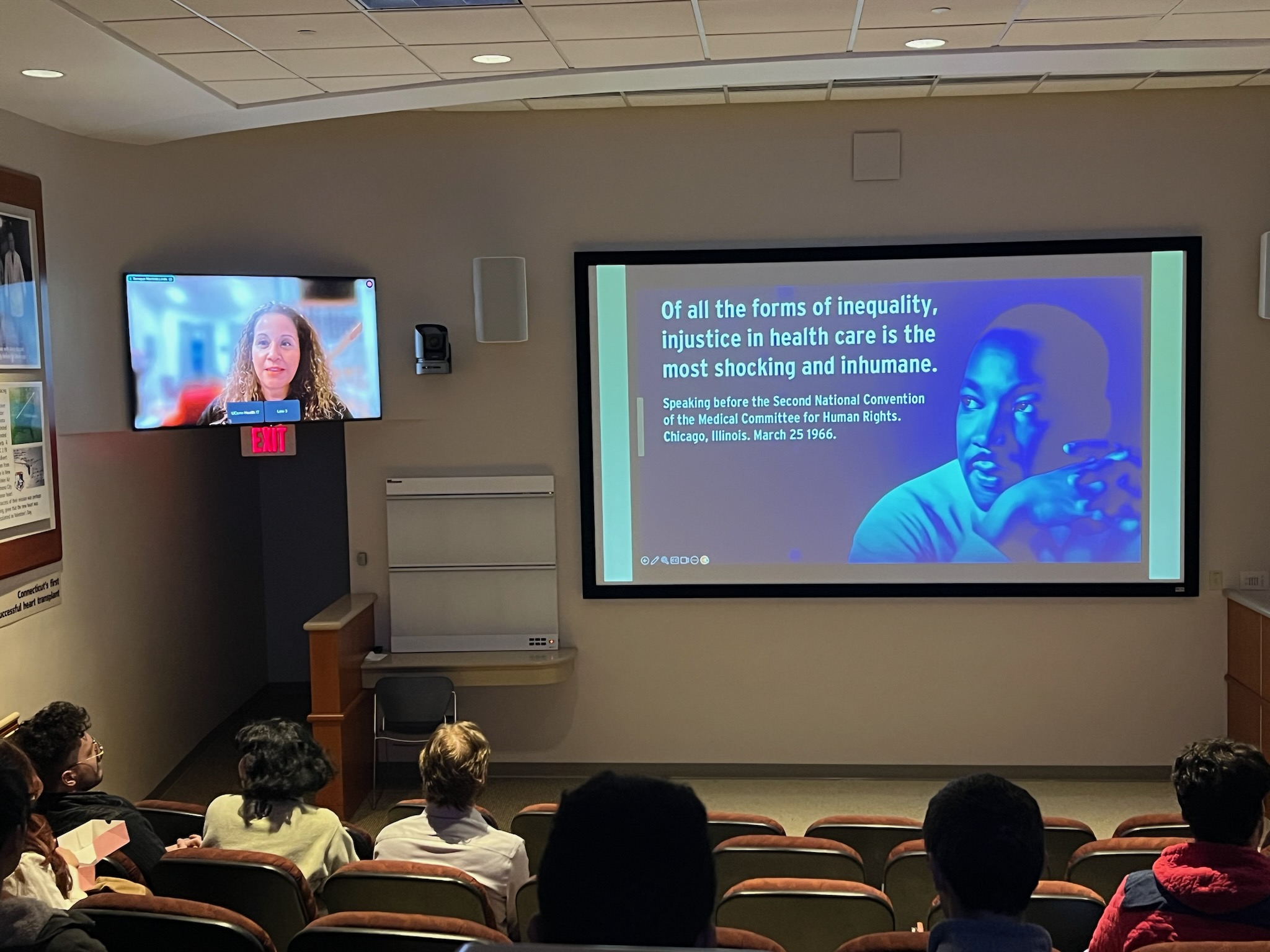’Tis the season for snowflakes, holly, and blustery storms that often cause power outages. Officially, Connecticut’s stormy season is September through March. But as the last two summers showed, we can get extensive storm damage to the electrical grid just about any time of year. Power outages can be inconvenient and sometimes dangerous. Fortunately, UConn engineers are getting better at predicting storm damage in advance. Utilities take their predictions and use them to line up repair crews in advance.
Here, UConn Today spoke with Assistant Professor of Civil and Environmental Engineering and manager of the UConn Eversource Energy Center Diego Cerrai about his ongoing work predicting weather-related power outages, and a brand new project with NASA that focuses on snow.
There’s a brand new weather station at the Depot Campus, and I hear it has something to do with snow. Tell us about it.
The weather station is part of the IMPACTS campaign. It’s a joint effort between UConn, NASA, and a few other institutions to understand snowstorms along the United States’ North Atlantic coast.
It is much more difficult to measure snow than rain. Here, we can measure the number, size, shape, and density of snowflakes and relate it to windspeed, temperature, and frontal systems. And how sticky it is. Sticky snow is the hardest to deal with.
We’re using satellites, aircraft that fly into storms, and land sensors like the ones at Depot Campus. The main goal is to measure snow during storms and understand it. Fundamental science. But looking at the same thing from different perspectives, we can understand better both what is going on, and understand the limitations of our instruments.
Speaking of instruments, what’s actually out at Depot Campus?
A high-speed camera and a light a few feet in front. Whatever passes between the camera and the light is imaged. This captures snowflakes! We have a video of the snow on Christmas Eve! We can capture the structure of the flakes, the amount, the fall speed. It also has a small weather station to measure temperature, humidity, pressure, windspeed.

We don’t really know how to measure snow correctly yet. Most of this is remote sensing. We are measuring things we aren’t touching. So we don’t know if what the instruments are telling us is actually what is happening. But it’s important to know, because weather models use these measurements as inputs. Numerical weather models use observations from all over the US. Measurements have a huge impact on predictions! This will make snowstorms more predictable.
How do you predict storm damage to the electrical grid?
At UConn, we have a model combining weather, infrastructure, historical data, leaves on trees, and other data to predict damage to the electrical grid.
The data from the NASA IMPACTS mission will help us predict the damage from snowstorms.
We can predict thunderstorms, snowstorms, hurricanes, and tropical cyclones, and the associated power outages.
Can you tell us in more detail about the electrical grid outage model? It seems obvious that higher winds, say, would lead to more damage. But how does infrastructure affect it?
Outages are caused by the interaction between weather, vegetation, and the electric infrastructure. The outage model predicts the occurrence of future power outages based on future weather and vegetation conditions (e.g. amount of leaves on trees), and it is trained using re-simulations of hundreds of historical storms, and the associated outages, at high resolution. The high resolution is necessary for several reasons. The most important ones are an accurate depiction of weather phenomena, geolocalization of outages, and characterization of the variability of the electric infrastructure. In fact, if you have high winds but a low infrastructure density, the expected outages will be much lower than an area with high winds and high infrastructure density.
How finely grained are the model’s predictions? A mile or two? What controls the resolution of the model?
The models are at either 2 or 4 km resolution. For going at even higher resolution, we would need much higher computational power, because our models will need to run for the entire New England region every 6 hours.
There were some recent storms where the grid damage estimates were really off. Can you explain why that happens?
The reasons why our models are off are several. The most important ones are: one, incorrect characterization of the lowest atmospheric level (called planetary boundary layer): this often happens in spring and causes outage overestimation because the weather models predict a propagation of wind gusts from the low atmospheric levels towards the ground, which in reality does not happen because of a stable layer created by the cold ocean.
Two, incorrect temperature during winter storms: this can cause severe outage overestimations or underestimations because the temperature is very related to the snow density, and while dry snow produces little damage, wet snow can produce a ten-fold increase of damage with respect to dry snow, for the same amount (one of these cases was on Feb. 1, 2021).

And three, uncertainty in storm track: a notable case was Tropical Storm Henri last summer: when, two days in advance of its impact, a landfall was expected in Western Connecticut a devastating impact was predicted. Luckily, the storm track changed and the landfall was in the less populated Rhode Island, and therefore Connecticut ended up on the left (weaker) side of the storm. However, our models were not able to keep up with the sudden change of storm track the day before the storm, and we ended up overestimating its impact in Connecticut.
In general, what causes the damage to the grid and the power to go out?
In Connecticut, mostly trees and tree branches falling on overhead lines. 90% of outages in the northeastern US are caused by trees. Strong winds, or the weight of snow and ice. A lot depends on how many leaves are on the trees. And how wet and sticky—and heavy—the snow is. If snow is dry, it doesn’t stick.
Does that mean we’d be better off with power lines underground?
In more urban areas, changes are already happening. There is a cost per mile to putting power lines underground. It can be spread among many houses in urban areas. But in more rural areas, where houses are widespread, it’s costlier. And if there is a failure in an underground line, both finding and fixing it in a rural area is harder. Finding it in an urban area is easier, because you can see the houses on this block have power but not the houses down the street.
At the same time, you will have many fewer failures in rural areas. I think there is somewhere a balance between overhead and underground lines. I don’t expect underground lines in rural areas.
Will climate change make any difference to grid damage in your models?
We recently studied the impact of climate change on the occurrence of power outages, and we demonstrated that the amount of power outages is trending up. Heavy precipitation events and high wind events are increasing. If the soil is very wet, and if there are high winds, trees are likely to fail, but the impact of weather on the grid is non-linear. That means a small increase of 2 or 3 mph at high wind speeds can have a huge impact on outages, while the same increase at low wind speed may not produce any effect.
Finally, how did you get into forecasting electrical outages?
I’ve always liked weather. Since I was a child in Italy, I had weather stations in my garden at home. For my bachelors degree I studied physics, because I needed the foundation to understand the natural processes. For my masters I studied physics of earth systems. Later, I was attracted to UConn because of the possibility of studying not only weather, but the impact that weather forecasting has on our lives.
The Eversource Energy Center at the University of Connecticut is a partnership between New England’s largest energy provider and the School of Engineering; the College of Agriculture, Health and Natural Resources; and the School of Business, located in the Innovation Partnership Building at UConn Tech Park. The partnership, established in 2015, is dedicated to using cutting-edge research to solve real-world challenges where weather, security, and energy intersect.



